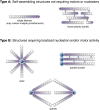Why are bacteria different from eukaryotes?
- PMID: 24330667
- PMCID: PMC3874686
- DOI: 10.1186/1741-7007-11-119
Why are bacteria different from eukaryotes?
Figures






References
Publication types
MeSH terms
Grants and funding
LinkOut - more resources
Full Text Sources
Other Literature Sources

